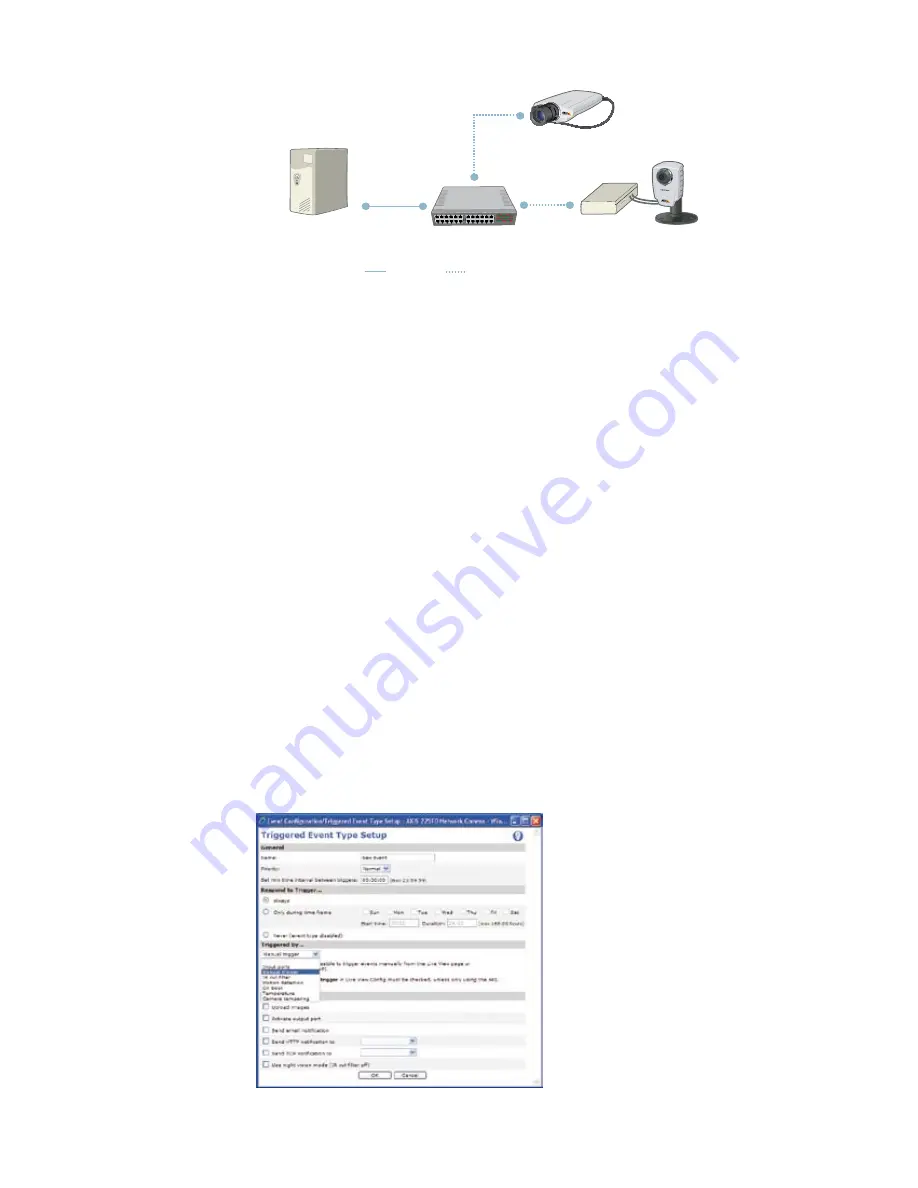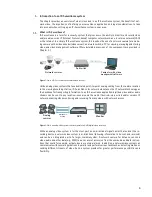
6
Figure 1.1.g.
A system that uses Power over Ethernet (PoE). A PoE-supported network camera connects directly to a PoE-
enabled switch, while a network camera without built-in PoE support can use an active splitter to make use of PoE.
PoE enables networked devices to receive power from a PoE-enabled switch or midspan through
the same standard cable that transmits data (video). Hiring a certified electrician and installing a
separate power line are not needed—a big advantage, particularly in difficult-to-reach areas. With
PoE, network cameras/video encoders will also be able to receive centralized backup power from a
server room with an Uninterruptible Power Supply; so in the event of a power failure, the cameras/
video encoders will still be able to operate. (See diagram above.)
6)
Event management and intelligent video:
There is often too much video recorded and lack of
time to properly analyze them. Advanced network cameras/video encoders with built-in intelli-
gence or analytics take care of this by reducing the amount of uninteresting video recorded and
enabling programmed responses.
Advanced network cameras/video encoders have such features as built-in video motion detection,
audio detection alarm, active tampering alarm, I/O connections, and alarm and event management
functionalities. These features enable the network cameras/video encoders to be constantly on guard in
analyzing inputs and waiting for an impulse to kick-start an action or a series of actions. Having intel-
ligence/analytics conducted at the network camera/video encoder rather than at the recording server
reduces network bandwidth usage and storage needs since only actionable data (video) is sent over the
network. In addition, less computing power is required from the recording server.
Event management functionalities can be configured using the network video product user
interface or a video management software program. Users can define the alarms/events by setting
the type of triggers to be used and when, as well as the responses (e.g., recording to one or
multiple sites—whether local and/or off-site for security purposes; activation of external devices
such as alarms, lights and doors; and notification messages to users).
Figure 1.1.h.
Setting up an event trigger using the network camera’s user interface.
PoE-enabled switch
Uninterruptible Power
Supply (UPS)
3115
Network camera
with built-in PoE
Network camera
without built-in
PoE
P o w e r D s in e
4 0 0 1
Active
splitter
Power
Power over Ethernet
Summary of Contents for IP-Surveillance system
Page 49: ...49 ...







































